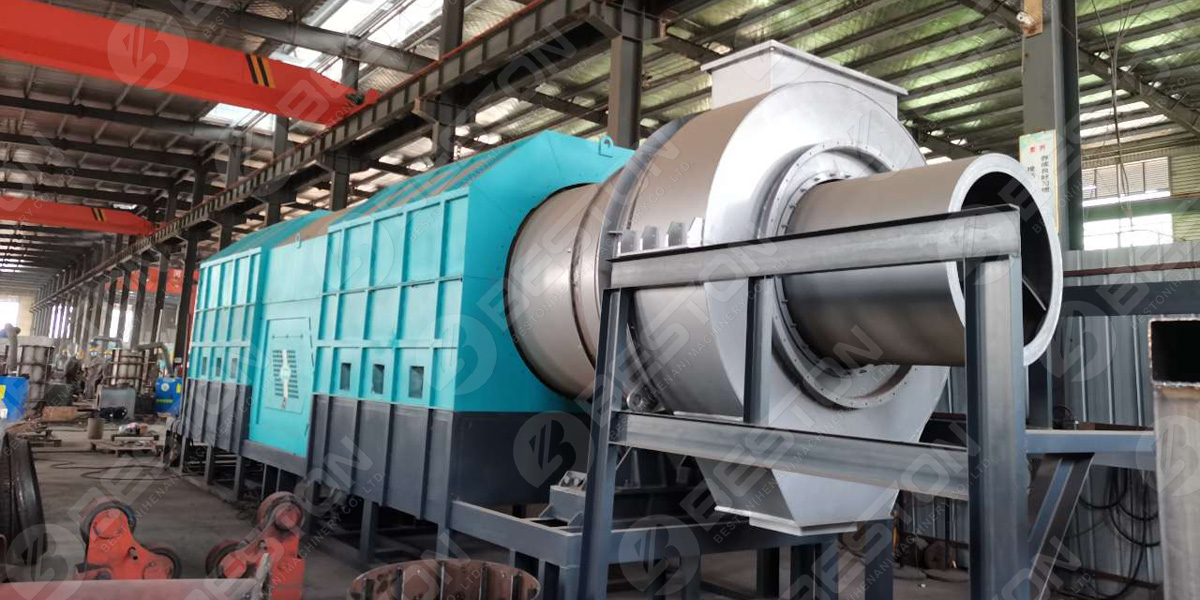In an era where sustainable energy sources are becoming increasingly important, it is crucial to explore innovative technologies that can revolutionize our energy landscape. One such technology that holds immense potential is biomass pyrolysis. This article aims to provide a comprehensive overview of biomass pyrolysis plants and shed light on their advantages, applications, and future prospects.
Understanding Biomass Pyrolysis
To grasp the essence of biomass pyrolysis, let's delve into its definition and process. Biomass pyrolysis involves the thermal decomposition of organic materials, such as agricultural residues, wood, or dedicated energy crops, in the absence of oxygen. This process breaks down the complex organic matter into three primary products: biochar, bio-oil, and syngas.
Different types of biomass can be used in pyrolysis, ranging from forestry residues and crop residues to dedicated energy crops like miscanthus or switchgrass. The choice of biomass depends on factors such as availability, energy content, and environmental considerations.

Advantages of Biomass Pyrolysis Plant
Biomass pyrolysis plants offer a plethora of advantages, making them an attractive solution for sustainable energy generation. Firstly, they enable the production of renewable and sustainable energy. By harnessing biomass resources, these plants contribute to reducing our reliance on fossil fuels and minimizing carbon emissions.
Moreover, biomass pyrolysis plants play a significant role in waste management and environmental sustainability. By utilizing organic waste materials as feedstock, these plants help divert biomass from landfills, reducing the release of methane—a potent greenhouse gas. Additionally, the biochar produced during pyrolysis can be used as a soil amendment, enhancing soil fertility and sequestering carbon for long periods.
Furthermore, the establishment of biomass pyrolysis plant contributes to economic growth and job creation. These plants require skilled labor for operation and maintenance, providing employment opportunities within local communities. Additionally, the production of bio-oil and syngas opens up new avenues for the development of bio-based chemicals and fuels, fostering innovation and diversification in the energy sector.
Applications of Biomass Pyrolysis
Biomass pyrolysis plants find versatile applications across various sectors. Firstly, they can generate electricity and heat by utilizing the bio-oil and syngas produced during pyrolysis. This clean energy can be used to power industrial processes, heat buildings, or even feed into the grid, bolstering energy security and reducing greenhouse gas emissions.
Moreover, biomass pyrolysis plants contribute to the production of biofuels and chemicals. The bio-oil obtained from pyrolysis can be further refined into transportation fuels, such as biodiesel or renewable gasoline. Additionally, the syngas can serve as a valuable precursor for the production of bio-based chemicals, including fertilizers, plastics, and pharmaceuticals.
Furthermore, biomass pyrolysis plants play a crucial role in soil amendment and carbon sequestration. The biochar produced during pyrolysis possesses excellent carbon retention properties, making it an effective tool for improving soil quality and sequestering carbon. By incorporating biochar into agricultural practices, we can enhance crop productivity, reduce fertilizer requirements, and mitigate climate change through carbon sequestration.
Challenges and Future Prospects
While biomass pyrolysis holds immense potential, there are several challenges that need to be addressed for its widespread adoption. Technological limitations, such as low conversion efficiencies and high energy requirements, pose obstacles that researchers are actively working to overcome. By improving reactor designs, optimizing process conditions, and exploring catalytic enhancements, the efficiency of biomass pyrolysis plants can be significantly enhanced.
Additionally, regulatory frameworks and policy support play a crucial role in facilitating the deployment of biomass pyrolysis plants. Governments need to provide incentives, subsidies, and favorable policies to encourage investment in this technology. By creating a supportive environment, we can accelerate the transition towards a sustainable and clean energy future.
Moreover, continuous research and development initiatives are essential for unlocking the full potential of biomass pyrolysis. Scientists and engineers are exploring advanced feedstock pretreatment techniques, novel catalysts, and integrated process configurations to further improve the economics and environmental performance of biomass pyrolysis plants.
In conclusion, biomass pyrolysis plants offer a revolutionary approach to energy generation, waste management, and environmental sustainability. By leveraging this technology, we can diversify our energy sources, reduce greenhouse gas emissions, and create a circular economy for biomass resources. With ongoing advancements and supportive policies, biomass pyrolysis has the potential to play a pivotal role in transforming our energy landscape and ushering in a cleaner, greener future.
Comments
No comments yet. Be the first to react!